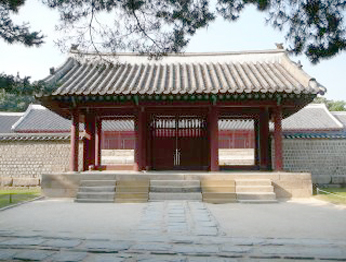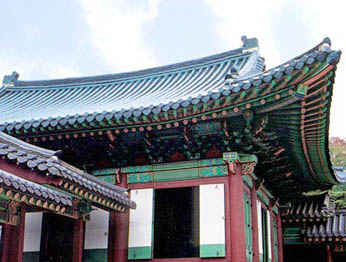JONGMYO SHRINES

Sharp Travel & Tours Inc.
Contact Info
Telephone - 847.759.8813
Toll Free - 1.888.To.Sharp
Email - sharptour@hotmail.com

Statement of Significance:
The World Heritage Committee inscribed this site on the World Heritage List on the basis of criteria (iv) and (vi), in recognition that the Korean version of the Buddhist scriptures (Tripitaka Koreana) at the Haeinsa Temple is one of the most important and most complete corpus of Buddhist doctrinal texts in the world, and is also outstanding for the high aesthetic quality of its workmanship. The buildings in which the scriptures are housed are unique both in terms of their antiquity so far as this specialized type of structure is concerned, and also for the remarkably effective solutions developed in the 15th century to the problems posed by the need to preserve woodblocks against deterioration.
Description:
Jongmyo Shrine is dedicated to the spirits of Korea's royal ancestors. The royal family of the Joseon Dynasty paid homage to their forefathers in the time-honored Confucian tradition. This sedate shrine of beautiful architectural simplicity is appreciated as an invaluable cultural inheritance and was registered on UNESCO's World Cultural Heritage List in 1995.
Jongmyo Shrine is made up of Jeongjeon (the main hall), Yeongnyeongjeon (the Hall of Eternal Peace), and auxiliary facilities. Jeongjeon, with its attached cloister, is said to have been the longest building in Asia. It enshrines the memorial tablets of greatly honored kings and their queens, today containing 19 memorial tablets of kings and 30 tablets of their queens in 19 spirit chambers.
Jongmyo Jerye, or the Royal Ancestral Rite, was one of the most important government events during the Joseon period. It was conducted five times annually. Additional rites were also performed on special state occasions to notify the ancestral spirits of the events. The king himself became an officiant who offered repetitive bows and liquor before each chamber according to strict procedures maintaining an austere ambiance.
Each procedure is accompanied by ritual music, Botaepyeong and Jeongdaeeop.The orchestral ensemble is composed of Chinese-derived and native string, percussion and wind instruments including bell chimes (pyeonjong), stone chimes (pyeongyeong), the cylindrical Chinese oboe (dangpiri), the bowed zither (ajaeng), and the transverse flute (daegeum), which still capture the authentic form of the old court music that has been played since the early Joseon period. The head of the dynasty's Jeonju Yi Clan still officiates at the annual rite on the first Sunday of May.
Jongmyo was built in 1394, when the Joseon Dynasty moved their capital from Gaeseong to Hanyang (the present Seoul), but was burnt to the ground during the Japanese invasion of Korea in 1592. The reconstruction was planned in 1604 and completed in 1608, the 1st year of Gwanghaegun (r. 1608-1623).
Jongmyo Jerye, the royal ancestral rite, is certainly a historical rarity in the world, with 500-year old formalities for ancestral worship set in 1462. It keeps intact the original procedures for the offering of sacrificial gifts of food and drink in authentic ritual utensils, with royal descendents and participants costumed by rank, as well as ritual dance and music ensembles.

Please visit www.unesco.org for more information about UNESCO.
UNESCO Properties of Korea
© 2008 Sharp Travel and Tours Inc.